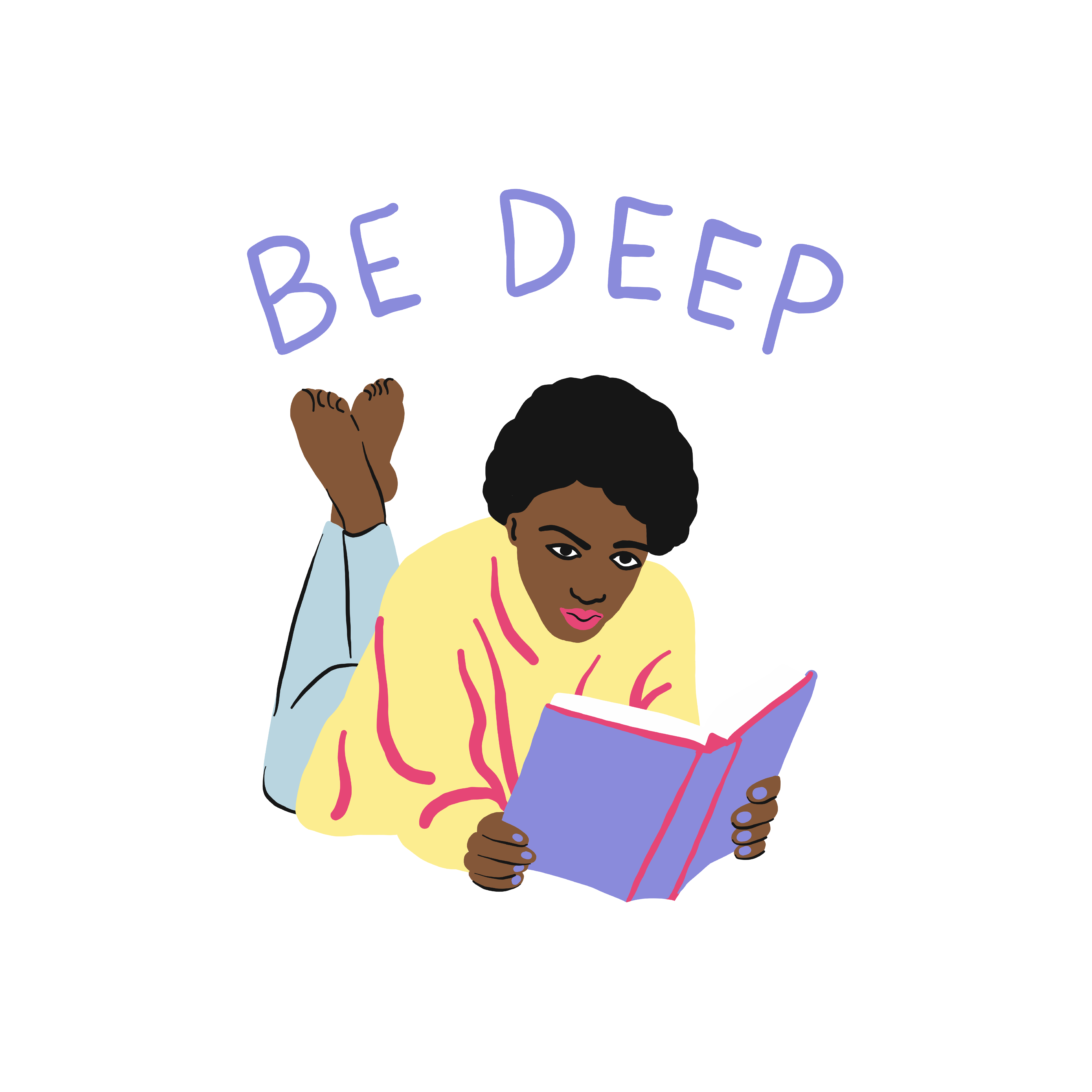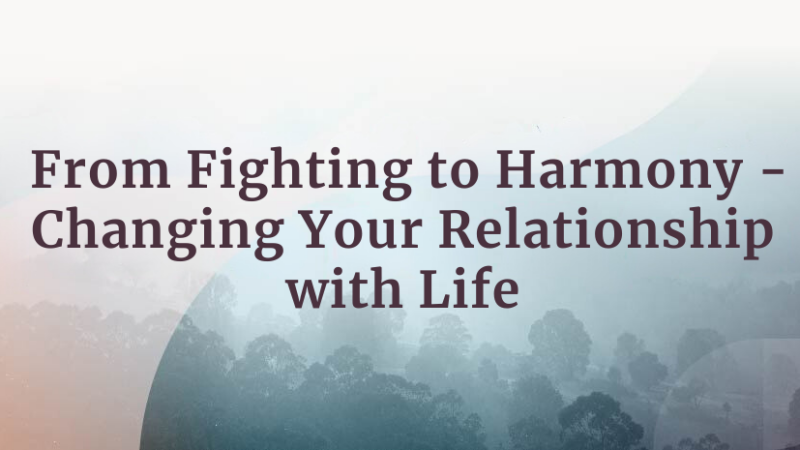-
E107: Becoming Okay Inside
Michael Singer — August 28, 2025
The fundamental spiritual question is not “How do I be okay?” It is “Why am I not okay?” Our ...
-
Andrew Holecek: What Reincarnates? | Part 2
Andrew Holecek — August 26, 2025
Join Tami Simon and Andrew Holecek for the second half of their exploration of reincarnation. Here,...
-
Honey Tasting Meditation: Build Your Relationship with Sweetness
There is a saying that goes “hurt people hurt people.” I believe this to be true. We have been...
Written by:
Amy Burtaine, Michelle Cassandra Johnson
-
Many Voices, One Journey
The Sounds True Blog
Insights, reflections, and practices from Sounds True teachers, authors, staff, and more. Have a look—to find some inspiration and wisdom for uplifting your day.
Standing Together, and Stepping Up
Written By:
Tami Simon -
The Michael Singer Podcast
Your Highest Intention: Self-Realization
Michael Singer discusses intention—"perhaps the deepest thing we can talk about"—and the path to self-realization.
This Week:
Andrew Holecek: What Reincarnates? | Part 2 -
Many Voices, One Journey
The Sounds True Blog
Insights, reflections, and practices from Sounds True teachers, authors, staff, and more. Have a look—to find some inspiration and wisdom for uplifting your day.
Take Your Inner Child on Playdates
Written By:
Megan Sherer
600 Podcasts and Counting...
Subscribe to Insights at the Edge to hear all of Tami's interviews (transcripts available, too!), featuring Eckhart Tolle, Caroline Myss, Tara Brach, Jack Kornfield, Adyashanti, and many more.
Most Recent
Is There a Holy Grail of Healing?
Lissa Rankin, MD, is a New York Times bestselling author of multiple books including Mind Over Medicine, a physician, speaker, founder of the Whole Health Medicine Institute and the nonprofit Heal At Last, and mystic. Lissa has starred in two national public television specials, her TEDx Talks have been viewed over 4 million times, and she leads workshops both online and at retreat centers like Esalen, 1440 Multiversity, Omega, and Kripalu.
In this podcast, Dr. Rankin speaks with Sounds True founder, Tami Simon, about her new book, Sacred Medicine: A Doctor’s Quest to Unravel the Mysteries of Healing. Their conversation explores: the placebo effect and the mega-placebo effect; the scientific method and some assumptions we should question; the relationship between trauma, the nervous system, and healing; connectivity and co-regulation; developmental trauma, or what Mark Epstein calls “the trauma of everyday life”; the concept of spiritual bypassing; chronic inflammation as a root cause of many diseases; the paradoxes of healing; our four “intelligences”—mental, somatic, intuitive, and emotional—and what to do when they “disagree”; Internal Family Systems (IFS) therapy and working with the polarized parts within ourselves; healing the collective; and more.
S2 E1: From Fighting to Harmony – Changing Your ...
The world’s great wisdom traditions all speak on the value of surrender. In this episode, Michael discusses what it takes to grow beyond spiritual resistance.
For more information, go to michaelsingerpodcast.com.
© Sounds True Inc. Episodes: © 2024 Michael A. Singer. All Rights Reserved.
Giving Your Heart Over to Real Change
Sharon Salzberg, a student of Buddhism since 1971, has been leading meditation retreats worldwide since 1974. Influenced by her more than 25 years of study with Burmese, Indian, and Tibetan teachers, she teaches intensive awareness practice (vipassana or insight meditation) and the profound cultivation of lovingkindness and compassion (the Brahma Viharas). She is a cofounder of the Insight Meditation Society and the Barre Center for Buddhist Studies, both in Massachusetts. She is the author of books including The Kindness Handbook, Lovingkindness, A Heart as Wide as the World, and, most recently, Real Change. She has also authored several Sounds True audio programs including Insight Meditation (with Joseph Goldstein), Room to Breathe, and Lovingkindness Meditation.
In this podcast, Sharon Salzberg joins Sounds True’s founder, Tami Simon, to discuss her recent book, Real Change: Mindfulness to Heal Ourselves and the World—and how you can begin to bring the core of your being into your work, your community, and your life. Sharon and Tami also discuss how contemplative practices can open the heart, agency and reclaiming your power to effect change, the empowering symbol of the Statue of Liberty, transforming anger into courage, determining the next step you can take when you’re uncertain, patience, faith as the act of giving over your heart, generosity and how you end up with more through giving, moving from grief to resilience, suffering and the First Noble Truth, the role of joy on the path, living by the truth of interconnection, caring to know as the first step in making a difference, and a sneak preview of Sharon’s forthcoming book, Real Life.
Customer Favorites
A.H. Almaas: Love of the Truth, Without End
Tami Simon speaks with A.H. Almaas. A.H. Almaas is the pen name for Hameed Ali, best known as the originator of the wisdom path known as the Diamond Approach. He is the author of 14 books, including The Unfolding Now, and his works with Sounds True include the audio learning course The Diamond Approach and Realization Unfolds, a dialogue with Adyashanti. In this episode, Tami speaks with Hameed about some of the distinct characteristics of the Diamond Approach as an approach to investigating both reality and oneself as a path to liberation, why he makes no distinction between a psychological and spiritual approach to inquiry, and how the love of truth drives the process of realization. (73 minutes)
Mindful Movement: Walking Meditation 101
The Here and Now
What if you could change your life by doing one thing for just ten seconds each day? What if this thing would make you more contented, more grounded, and less stressed?
Welcome to mindfulness.
We spend almost all of our time worrying about two things: what has already happened (the past) and what hasn’t happened yet (the future). This only makes us miserable. The past is over, so there’s nothing we can do about it. And the future isn’t something we should be thinking about right now—unless we’re taking concrete action toward a goal.
Mindfulness breaks us out of this pattern by turning our awareness to the simple moments of life as they happen. We laser in on our senses as we’re experiencing them, and we feel them deeply.
So, the way to “be deep” is to focus on what’s going on right now.
I have two favorite ways to zap into the present moment.
The first way is to briefly tune in to my breath a few times a day. Set an alarm on your watch or phone to go off at three set times during the day. When it goes off, close your eyes and take three deep breaths. Notice how the breath feels as it flows in and out. Let go of whatever else is going on in your mind. Then open your eyes and go back to your day.
The second way is to tune in to the little details of the day. Say you’re picking up a water bottle. Consider this: How does the bottle feel in your hand? Is it heavy or light? When you take a sip of the water, how does it feel on your tongue? Is it cool or warm? What does it taste like? Try this exercise with one small act each day.
 MINDFUL MOVEMENT: Walking Meditation
MINDFUL MOVEMENT: Walking Meditation
Walking meditation is a great way to de-stress and get centered while moving your body and getting some fresh air. It takes only a few minutes, so you can do it almost anywhere.
- The next time you’re walking down the street, start by getting your senses alert. Tune in to the pace of your steps and fall into the rhythm of the steps. What do they sound like?
- Turn your attention to an object you see as you’re walking. It might be a sign, a tree, or a building. Look intently at that object and observe it without labeling it. Just notice it.
- Now turn your attention to the noises that surround you. Don’t label them. Just listen.
- Finally, turn your attention to your breathing. Is it fast and shallow or slow and deep? Take a few deep breaths and continue with your steady pace.
- When you finish your walking meditation, take a minute and pause before reentering your day. Notice the way your body and mind feel. Carry that alertness and presence with you into the rest of your day

This is an excerpt from the chapter “Be Deep” from Whole Girl: Live Vibrantly, Love Your Entire Self, and Make Friends with Food by Sadie Radinsky.
 Sadie Radinsky is a 19-year-old blogger and recipe creator. For over six years, she has touched the lives of girls and women worldwide with her award-winning website, wholegirl.com, where she shares paleo treat recipes and advice for living an empowered life. She has published articles and recipes in national magazines and other platforms, including Paleo, Shape, Justine, mindbodygreen, and The Primal Kitchen Cookbook. She lives in the mountains of Los Angeles. For more, visit wholegirl.com.
Sadie Radinsky is a 19-year-old blogger and recipe creator. For over six years, she has touched the lives of girls and women worldwide with her award-winning website, wholegirl.com, where she shares paleo treat recipes and advice for living an empowered life. She has published articles and recipes in national magazines and other platforms, including Paleo, Shape, Justine, mindbodygreen, and The Primal Kitchen Cookbook. She lives in the mountains of Los Angeles. For more, visit wholegirl.com.
 Sounds True | Amazon | Barnes & Noble | Bookshop | Indiebound
Sounds True | Amazon | Barnes & Noble | Bookshop | Indiebound
Carley Hauck: Being Brave and Loving at Work
Carley Hauck is a learning architect, leadership development consultant, author, speaker, and coach who serves as adjunct faculty at Stanford University and UC Berkeley Haas School of Business. She has worked with hundreds of leaders in Fortune 100 companies and high-growth startups such as LinkedIn, Genentech, Pixar, Clif Bar, Intuit, and Bank of the West. With Sounds True, Carley has published the book Shine: Ignite Your Inner Game to Lead Consciously at Work and in the World. In this podcast, Carley meets with Sounds True founder Tami Simon to discuss leading in a more conscious and inclusive way, cultivating a new operating model for how we go about conducting ourselves in business, leading change when you’re not the company’s leader, maintaining well-being and the ability to flourish at work, and more.






